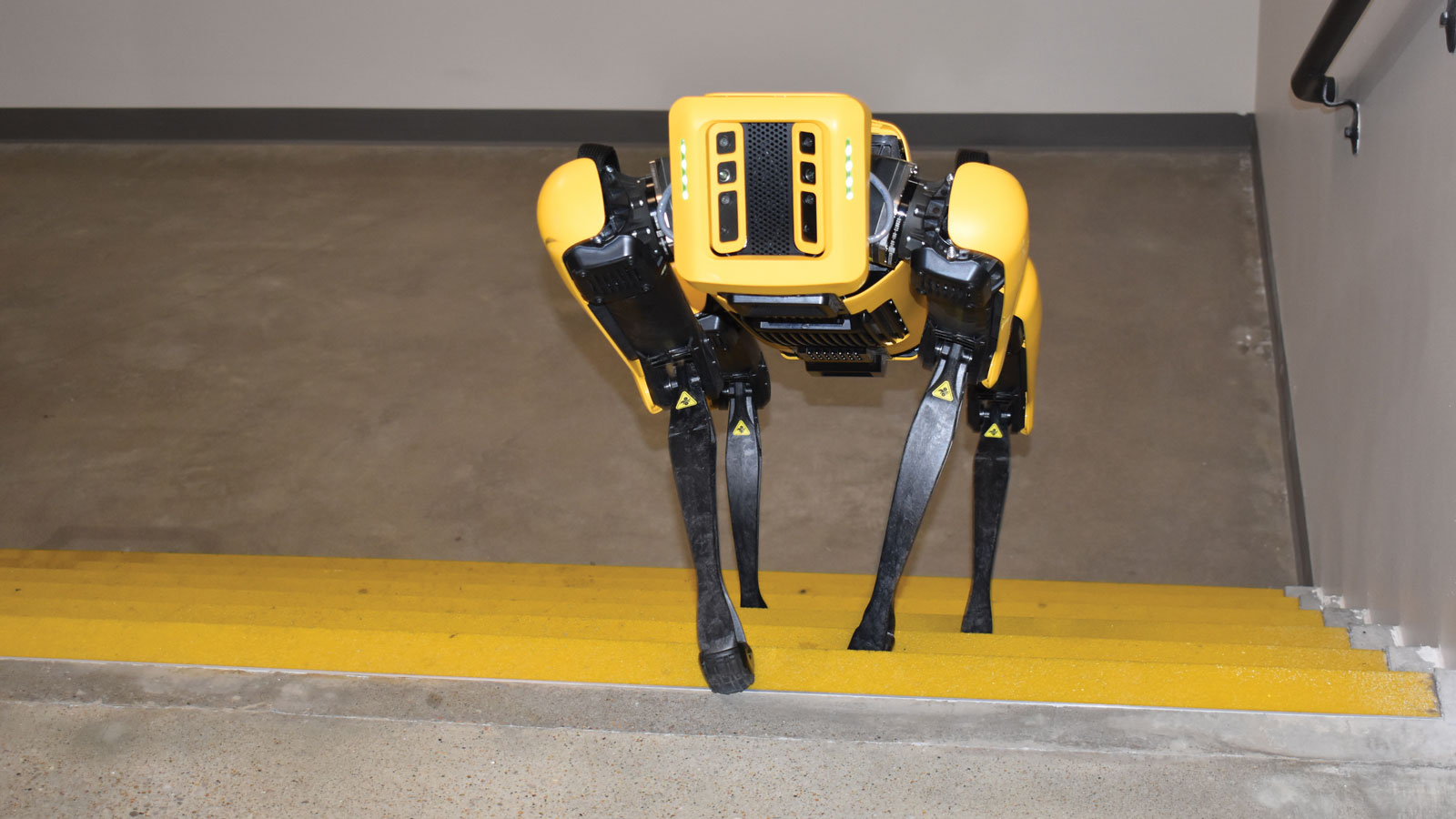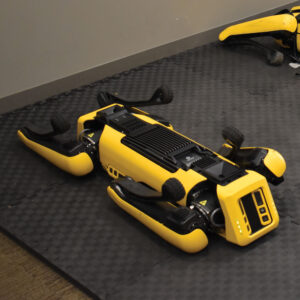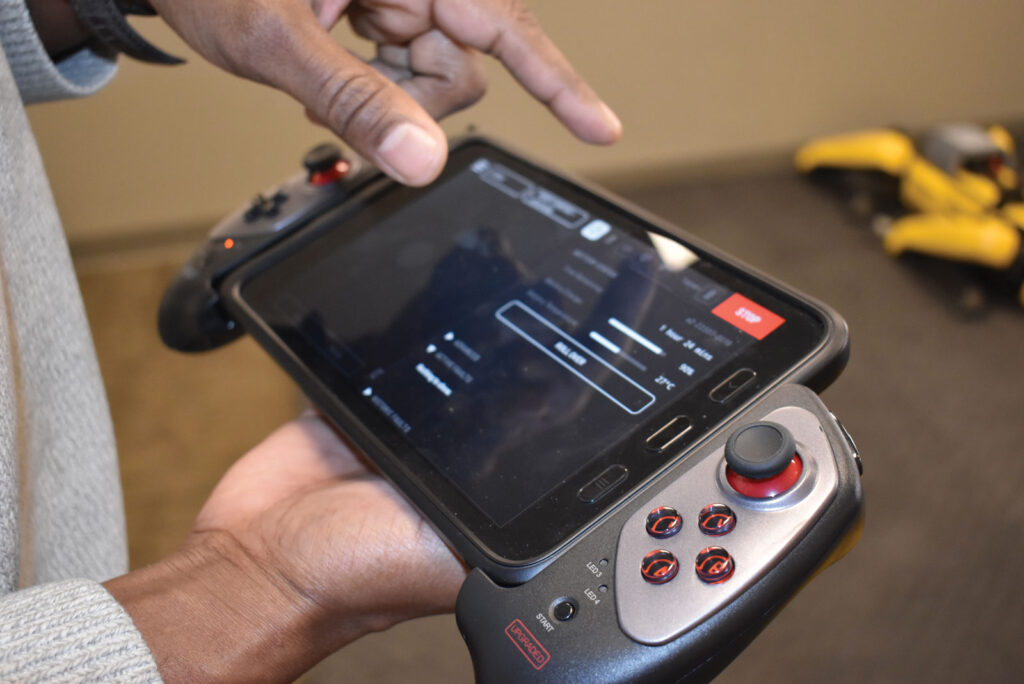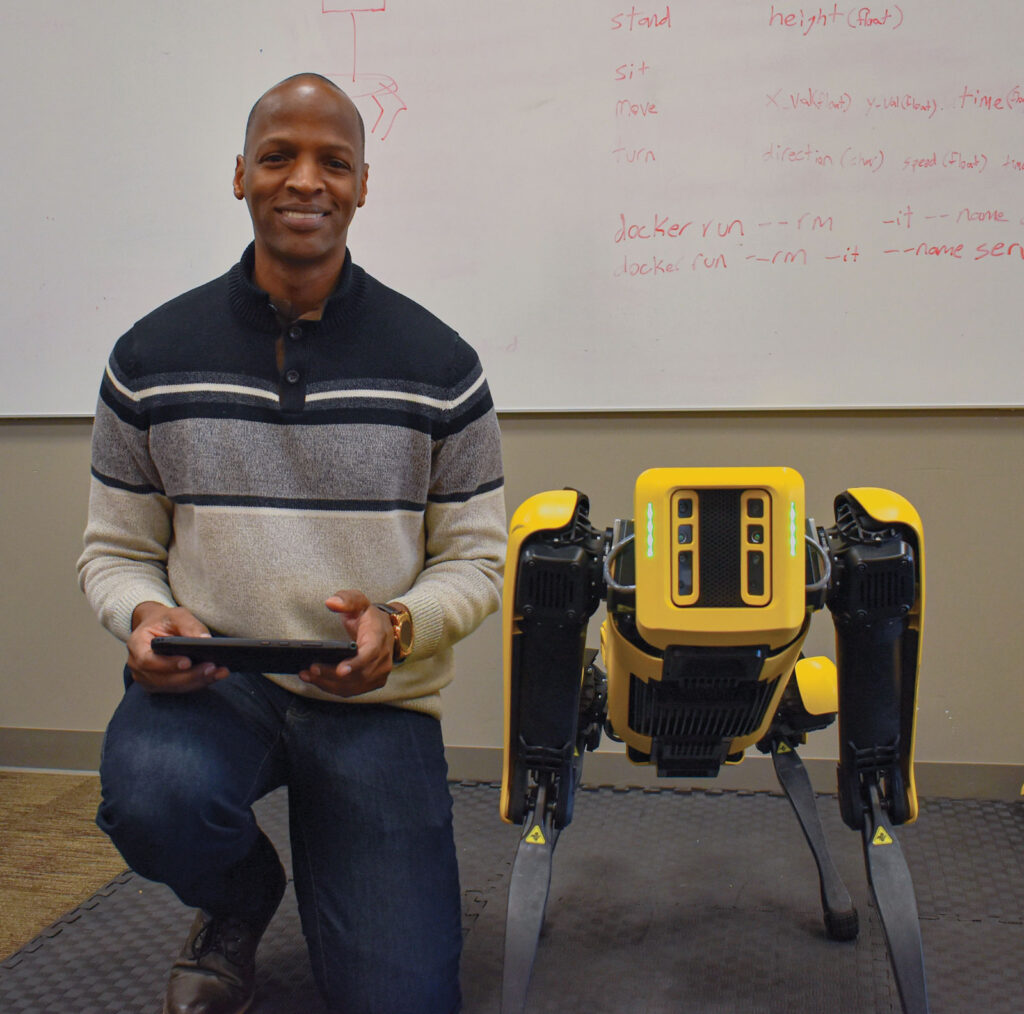Research, Spot, Research
- This story originally appeared in the March 2024 innovation and technology issue of COMO Magazine.

MU researchers and students use a unique robot to help guide technology for the future.
Readers of a certain generation will remember the “Dick and Jane” book series that featured those two youngsters and their dog, Spot. Dick and Jane cheered their pet with “Run, Spot, run.”

Imagine what would have happened if Spot had met Astro, the futuristic dog from The Jetsons, with all the advanced gadgets and technology. In the heart of MU’s College of Engineering, located in Laferre Hall, there is a version of “Astro-Spot.” Produced by Boston Dynamics, Spot the robotic dog has gained widespread attention in robotics as the first consumer-available robot.
Kristofferson “Kris” Culmer is an assistant teaching professor and director of the autonomous lab where Spot is “kenneled.” Culmer has been working with Spot since it arrived at MU in 2020. Entering the lab, he finds Spot lying on its belly next to two other Spots; one owned by MU and the other owned by the electric utility Ameren Missouri.

Culmer inserts a large battery pack into Spot and uses an iPad connected to a gaming controller to control the robot.
“I prefer the toggle switches; they give me better touch control,” Culmer says, laughing. “Maybe I’ve been playing too many video games.”
As Spot’s computer module comes on, the noise in the room gets louder, and its face comes to life with colorful LED lights. When Spot fully awakens, the LED lights turn neon green, and it becomes quieter. With a flick of his thumb, Culmer requests that Spot stand up. Spot rolls to the right side and unfolds its articulated legs, placing its feet on the padded floor. Standing up, Spot is about twenty-five inches tall at the shoulder and weighs roughly eighty pounds with the battery pack installed.
Its lean yellow body closely resembles a dog, and it seems to be ready for a pat on the head. Culmer turns Spot’s face towards him and the cameras eerily stare back at him.
MU purchased Spot using donated funds and was one of the first universities to acquire the robot. Today, many other universities and high schools have also acquired a Spot robot for research and teaching purposes. Spot is a culmination of several technologies, including robotics, communication, motors, electronics, laser ranging systems, global positioning systems, and more.

Culmer demonstrates some of Spot’s abilities, including self-correction when pushed, recognizing barriers, and movement through constricted areas. Spot has five cameras; one on each side, one on the rear, and two on the front panel. Each camera is specially designed to work with installed sensors, helping Spot map out a room. Spot can move at three miles per hour, has a 360-degree range of vision, is dustproof and waterproof, and can withstand temperatures as low as negative four degrees, and up to 113 degrees Fahrenheit. Spot can also add payloads to his frame, including a retractable arm that can turn doorknobs.
Undergraduates can use the lab for research or independent studies, and many have learned to program Spot, using the technology to advance their research in the field. Spot is transforming how organizations monitor and operate their technology to ensure the safety of their teams and make data-driven decisions. Spot’s capabilities can be used where humans or wheeled robots cannot proceed, such as in a smoke-filled, burning building or a toxic fume-filled factory. Although a trained dog could also do those tasks, if a robot falls, it can be repaired. The same can’t be said for a real dog.
“People will need to have a better understanding of technology from an academic perspective,” Culmer says, adding, “Drones are becoming increasingly commonplace, and driverless floor cleaners are being used at Walmart. Self-driving cars are also in development. Those who possess knowledge of technology will be in high demand. MU’s graduates’ knowledge will be significantly enhanced by using this lab and learning to work with Spot.”
Following Spot down a hallway, the robot suddenly lowers its backend and slows.
“This is something that we started questioning,” Culmer says, “We reached out to others who have a Spot about why it would do this, and after discussion, we soon realized that it is from the reflection of the ceiling lights onto the shiny concrete hallway floor. Spot began to compensate because it looked like it would be traveling down an incline or stairs. Spot also realized that a hallway in the building had been painted a dark color and would refuse to go down it out of the recognition that it could be a hole or that it might fall.”
Culmer says the Engineering and Information Technology Department hopes to offer a class on autonomous technology that would use Spot as that teaching tool.
“It’s just a matter of time before homes may have in-house assistants that are more robotic,” he explains. “We will need people who understand technology, including how to repair, reprogram, or enhance these machines.”
As Spot jogs back up the hallway to its home, Culmer flicks his fingers, making Spot slow down and turn to look at the lagging humans, almost as if the robotic canine with its all-seeing eyes wants the humans to pick up their pace.








